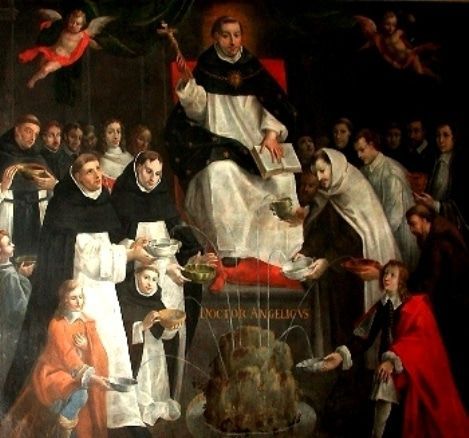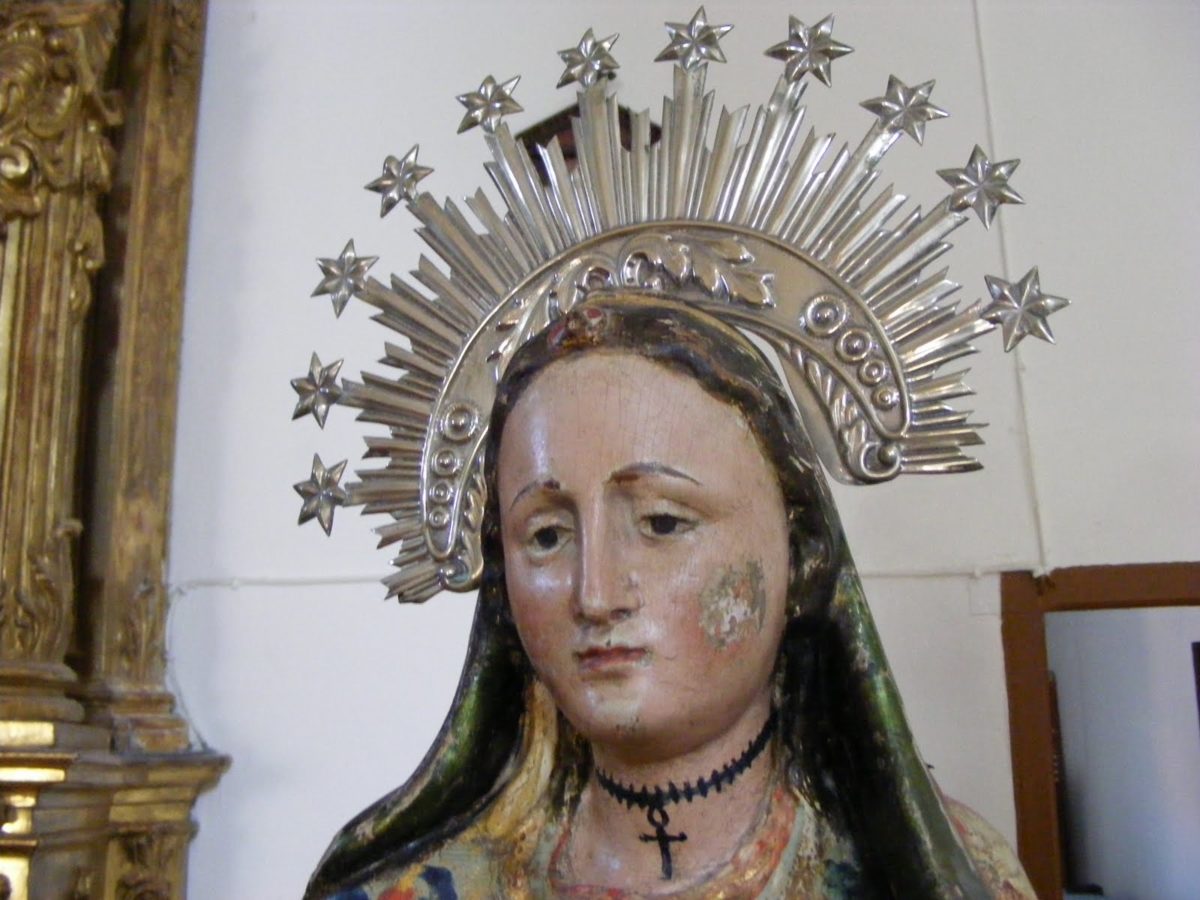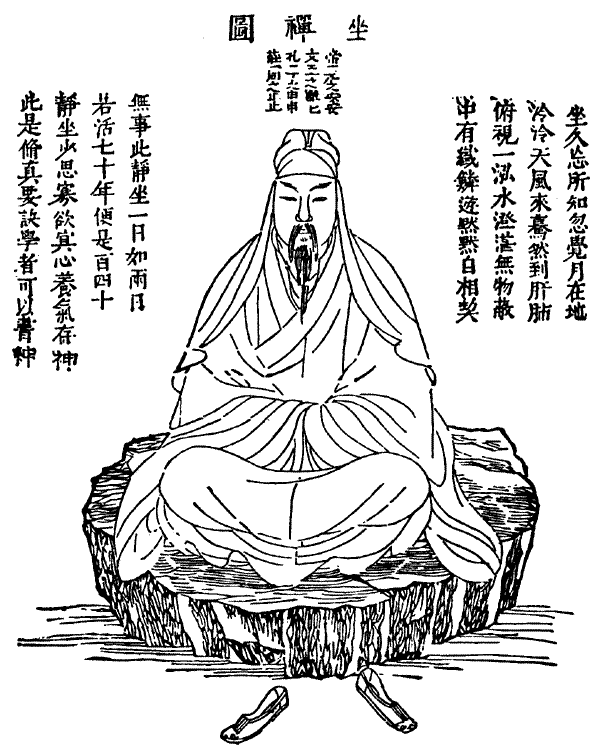Christianity is a religion that dates back to the 1st century AD and includes churches such as Catholic, Protestant and Orthodox. All have different approaches, rites and Christian practices. To learn more, we will look at the characteristics of Christianity that are common to all Christian denominations for easy understanding.
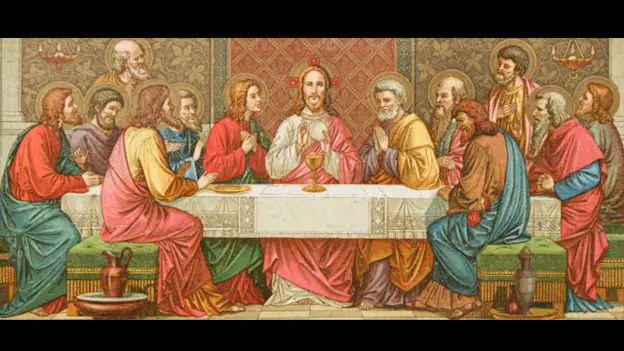
Key characteristics of Christianity
First of all, its name comes from the Greek “christianos”, which is derived from “Christós”, which comes from the Hebrew word “Messiah” and means “anointed one”. This name was and still is used to refer to the various doctrines, some of which have very different religious interpretations, but which for the most part share the same mystical foundations.
Beliefs
The beliefs of Christianity vary according to the specific sect to which they belong and the different interpretations and assessments of Christian mythology, but they converge on the following points God created the universe and all that exists, is sustained by the Word of God the Father, believes in the doctrine of the Holy Trinity (Father, Son, Holy Spirit in one person).
God offers salvation and eternal life to those who act in good faith; Jesus Christ revealed the true nature of God to all mankind and announced the coming of the Holy Spirit. (See article: Who is God).
Doctrine
Christian doctrine is primarily concerned with the forgiveness of sins. It varies according to the church to which one belongs, but they agree in professing the following
Love as the only way to follow God, it states that brotherhood, humility, service and charity should be the essence of the believer’s lifestyle. All this is based on the commandment of charity.
It is a messianic religion, meaning that Jesus of Nazareth or Jesus Christ is the Messiah promised in the Old Testament and therefore the Saviour.
The second coming of the Messiah. The coming of the Messiah would fulfil the coming of the final judgement, in which the righteous will be rewarded by God with the kingdom of heaven, and the sinners will be judged and punished by Satan in hell, followed by the resurrection of the dead and eternal life.
Resurrection and eternal life
This idea of eternal life was not very common among the Jews of Jesus’ time, who advocated eternal life centred on God. Christianity, with this idea of resurrection, goes in the opposite direction to reincarnation, for it there is only one life and it should be valued and respected as such (see article: Founder of Christianity).
The New Testament
The holy and fundamental text of Christianity is the Bible, consisting of the Old and New Testaments, although the latter is the basic orientation. However, it is the way in which it is interpreted that has led to the emergence of different Christian churches.
It brings together the four canonical gospels of Mark, Matthew, Luke and John, which summarise the message of Jesus. It also contains the Acts of the Apostles, the pastoral letters of Paul, Peter, James and John, and the prophetic visions of the Book of Revelation.
The Lord’s Supper
The main ritual is the Lord’s Supper. Participation in this memorial represents a commitment to follow Christ, expressed through the consumption of bread and wine, symbols of the body and blood of Jesus. Both Catholic and Orthodox Christians call this ritual Mass. Protestants use the terms Holy Communion and Worship, depending on their denomination, but some also call it Mass.
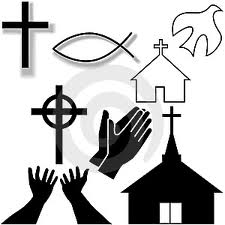
Symbols
Christian symbols are usually the cross, the fish or the anchor. Over the centuries, each church has developed its own symbols and forms. Christians venerate images, while Protestants disapprove of this custom.
The duality of Christ
Christian doctrine portrays Jesus as having a dual nature, both human and divine. The duality of flesh and soul is also manifested in this belief, of a perishable body and an immortal spirit, which has been transcended from very ancient traditions.
Rites
The Christian observes several Christian rites, with variations in each church:
Christian baptism, which marks initiation into the Christian faith and commemorates the baptism of Jesus in the Jordan by John the Baptist.
Confirmation, which ratifies the acceptance of the Christian faith.
Mass, the weekly liturgical gathering where prayers and rituals are shared in community.
Penance and Confession, as a form of repentance and forgiveness of sins through their expiation by prayer or penance.
Christian marriage is the sacred union between a man and a woman, which fulfils religious and legal requirements.
Extreme Unction is the mystical farewell and accompaniment of the seriously ill.
Prayer to communicate with God and to manifest the Christian faith. It is addressed to God the Father or to a member of the Catholic or Orthodox sacred calendar, and is also valid through hymns and psalms, especially in Protestant churches.
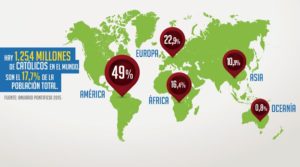
Believers
There are millions of believers scattered across the planet who follow Christianity. It is the most popular religion in the world, with over 1.28 billion followers according to 2015 data.
Primitive Christianity
This term has several meanings, as it can refer to the early Christian community in Jerusalem as well as the church of the apostolic era (before 70 AD). The writings of the New Testament provide a picture of official Christianity alongside other marginal religious movements.
It also informs us about the spread of the Church in the Greek and Roman context of the Mediterranean. It was the first period in the history of Christianity and it was characterised by certain aspects:
The apostles were the witnesses of the faith and the founders of communities; they chose co-workers to carry out these functions. The texts of the New Testament were still at the beginning of their written form, they were governed by the Old Testament. At that time, there were conflicts between Judaising Christianity and Gentile Christianity, of which the Acts of the Apostles and the letters of Paul are very eloquent testimonies.
This early community was conceived as an ideal of love and poverty, the realisation of the perfection of the Gospel, and so it appears in the Acts of the Apostles. There is talk of unity of heart and sharing of goods, but there were serious divisions in various places.

Early Christian art
From the origins of the Christian religion, it had developed its own artistic manifestations, following the classical Greco-Roman and Eastern traditions. Christian expressionism replaced classical realism. Perspective and modelling replaced flat figures without backgrounds.
Likewise, spiritual reality replaced physical reality, iconography replaced aesthetic weight. Christianity first spread to the Roman provinces of the East, which meant an anti-classical influence of symbolic and expressive art, in the Egyptian and Persian tradition, among others…
The Christian liturgy required all the faithful to gather in its temples, catacombs and basilicas, so their walls were filled with eloquent images and scenes from biblical passages, so as to leave no doubt as to their existence.
With these two characteristics, symbolism and iconographic simplicity, together with the cultural regression that occurred in the Roman Empire due to the economic and political crisis, Western Christian art suffered from the 3rd century onwards a process of artistic sclerosis, regression and primitivism. The situation improved with the emergence of Gothic naturalism in the 13th century.
Among its most notable characteristics are: the small number of figures and different objects; little variety of colours; suggestive, non-figurative paintings, directed at the viewer, almost always from the front, even if not frontal.
It was not easy to represent the essence of the divinity, God; there was a hierarchical perspective of the figures, the most important ones were the largest, as well as those at the back; the gesture was an important detail to show and nudity was exceptional.
Christianity in Rome
The decree of Emperor Theodosius in 380 AD made Christianity the exclusive religion of the Roman Empire, with far-reaching consequences. This decree united the Judeo-Christian roots of Europe with the Greco-Roman culture.
Churches were burned, Christians were persecuted, especially during the reign of Emperor Diocletian (245-316 AD), and their property was confiscated until the Council of Nicaea in 325 AD.
Diocletian wanted to revive the old pagan cults and make them the religion of the empire, but with the arrival of Constantine (285-337 AD) his anti-Christian policy disappeared.
The Roman Empire was going through a good period, its military and administrative bodies were functioning well, there was a free trade zone that was making economic progress. In Rome, its inhabitants enjoyed civil rights, which contributed to a growing and better cohesion among them, but there was no religious freedom.
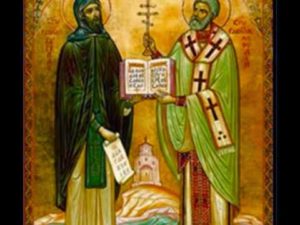
Christianity in the Middle Ages
When Emperor Theodosius the Great reigned in 381 AD, Christianity was proclaimed the only accepted religion in the Roman Empire, a great achievement, but when he divided the state among his sons, he was also responsible for the final division of the Roman Empire.
With the spread of Christianity, the Church became more powerful and sought to gain secular power through oaths of allegiance to various monarchs.
Theological disputes over the doctrine of the Trinity and the true nature of Christ caused friction between rivals for papal power.
These disputes were the cause of several schisms within the Eastern Church, as well as a sense of alienation between the Western and Eastern Churches, which ended in 1054, the year of the Great Schism, which divided the Christian Church into Eastern, or Orthodox, and Western, or Catholic.
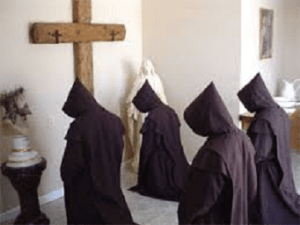
Culture and education
Many of the cultural and educational achievements of the Christian Church are due to the work of monks, who rejected the strong asceticism of the early pilgrims and patriarchs.
Monks dedicated themselves to the service of God and humanity, and their early monasteries were centres of scholarship and spirituality. The most important writings of the Greek and Roman periods were preserved in the libraries of these monasteries.
Ancient philosophy was highly valued, even if it did not have the same importance as contemporary beliefs and theologies. The abbeys opened their own schools and the monastic communities practised agriculture and trade, working together with the local population.
The abbeys also carried out research into medicinal plants and healing methods. The churches grew economically, acquiring wealth and large estates thanks to generous donations and prosperous businesses, a situation that led to a conflict between religious and secular power.
The arts
In terms of art, the Romanesque period was the most significant after the end of European antiquity. Characterised by massive, classical forms, it was followed by the Gothic period, whose cathedrals, with their great spires pointing skywards, resembled fingers pointing upwards.
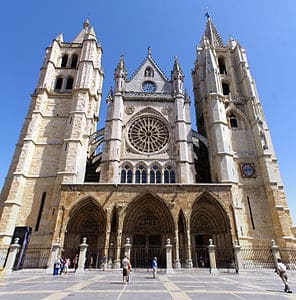
The Church
European Christianity was in a crisis of identity, which allowed anti-biblical currents to gain power. Radical movements that believed in the end of the world, such as the Arnoldists, Cathars, Albigensians and Waldensians, took up arms outside the Church and provoked more and more persecutions.
The Inquisition was a terrifying instrument of religious control and oppression. At this time, the Church recognised the “orders of beggars” in order to reduce criticism of its wealth and the secular nature of the papacy. The Franciscans in the 14th century challenged the Church’s right to secular power and use of wealth.
Holy places
The holiest site for many Christian denominations, including the Catholic Church, is the Church of the Holy Sepulchre, located in the Christian Quarter of the Old City of Jerusalem. This is where Jesus Christ rose from the dead. There are also other holy sites in Jerusalem, Bethlehem and Nazareth.
Christian marriage
Both the Bible and influential Christian thinkers have much to say about Christian marriage, although it is not the distinctive domain of the Christian church.
Just because you are religious or Christian does not mean you will have a long and happy marriage. Some Christian writers in the first century wrote about the relationship between faith and marriage. Paul wrote:
“Husbands should love their wives as their own bodies. Whoever loves his wife loves himself. For no man ever hated his own flesh, but nourished and cherished it, as Christ also does the church, for we are members of his body, his flesh and bones. For this reason a man shall leave his father and mother and be united to his wife, and the two shall become one flesh”.
In this verse Paul compares the relationship between husband and wife to the relationship between Jesus and the Church. This has very important implications for the nature of Christian marriage.

Christian love
Agapē is a Greek word used in the teachings of Jesus and in early Christian writings to describe the kind of love that God shows to people. This word has nothing to do with the fantasy concepts of romantic love that create so many myths about marriage, especially in Western culture.
At the beginning of the relationship, this agapē can be very pleasurable, but it is also susceptible to the ups and downs of life together, to the “good and bad” of marriage. The effort to keep this unconditional love active every day is what defines a truly Christian marriage and characterises an authentically Christian life.
Christian courtship
One of the great problems of Christians and non-Christians alike is to find the ideal partner who suits their tastes, their beliefs, their culture. But sometimes they forget how to bring the courtship to a happy ending, a Christian marriage.
Here is some advice for young Christian couples on how to have a happy marriage:
- In order to have a blessed courtship, both must be in good fellowship with God and be in constant prayer and fasting, because if there is no good relationship with God, there will be no good relationship. They should always pray for each other and always attend church, for only if they truly love God can they truly love each other.
- An engaged couple should abide by what their leaders and pastors tell them, for their advice is good, as are their parents, from whom they should ask permission every time they go out together, which is pleasing to God. The pastor can help them in dating and guide them so that they do not fall into sin.

Do’s and don’ts
- There are some things in courtship that can only be done by those who are already married. You should be patient and keep your mind on other, more important things. One should not have sexual relations before marriage, as this is one of the things that Christianity leaves for the moment of marriage, because sex is not for pleasure, but for the procreation of new human beings.
- What a married couple should do is to support each other in everything, to be “helpers for helpers” as the Bible says. Counsel each other, motivate each other to achieve your dreams and goals, encourage each other when you are having a hard time, and pray together.
- You can help each other in your academic pursuits so that you can graduate with a degree that will help support the household that you will both start. If a man loves his partner, he will not cause her to sin, he should seek her good; if not, it shows that there is no real love in this courtship, but only a relationship to give vent to sexual desires and impulses.
Christian leader
To be a Christian means first of all to have a close loving relationship with God, to consider Him as your Father and Jesus Christ as your brother. To be faithful to what his Son says, to follow his teachings and put them into practice, strengthening faith and spirituality through the means he left behind. He must practise justice and charity towards his neighbour, as the Scriptures say.
For his part, the Christian leader must remember that the people he leads are ends in themselves, not means to be used and discarded. The leader’s purpose is to serve and not to exploit the people under his care, to teach and not to punish, to forgive and not to seek revenge. Being a leader is not easy; it requires many virtues, including patience, perseverance and strength.
Patience, perseverance and fortitude
Patience will help you to overcome the changes that you will observe over time, you must know how to wait to see the fruits of your actions that seem impossible to achieve when you start.
While perseverance will help you to become more and more merciful and charitable, your Christianity cannot depend on the mood of the day, but is based on good deeds, repeated again and again until you assimilate them.
In order not to succumb to the seductions that the world offers us every day, it is necessary to have the strength to fight against selfishness, consumerism and relativism.
Think of helping others to grow and develop as good human beings, not of taking advantage of them, a temptation that regularly presents itself to leaders and sometimes gets in the way of exercising leadership in a productive and positive way.
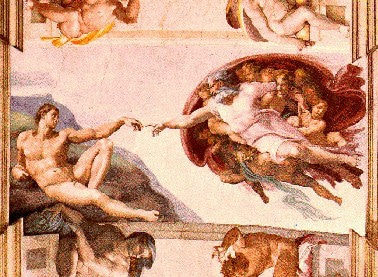
Christian Humanism
This interpretation of Christianity in a humanist key is part of a process that began in the last century and continues to this day, of revising Christian doctrines and adapting them to the modern world. A world that the Catholic Church, through the Counter-Reformation, had embraced for many centuries with a position of rejection or open condemnation.
The Church was forced to change the world view it had inherited from the Middle Ages, as well as the defence of the social order associated with it. In the course of this process, the Church was confronted with fierce resistance, changes of course and rethinking.
Social Christianity
In contrast to liberalism, which flourished in Europe in the 18th and 19th centuries, and socialism, also in Europe in the last century, social Christianity emerged.
It is based on natural law and the social doctrine of the Church, especially in the papal encyclicals, which, in the face of the violent struggles that affect a large part of humanity, allow consensus to prevail; on social justice, which must prevail over individualism; on man as a free being; and on fraternity, solidarity, welfare and charity as a task for all.
This Christian social doctrine has a philosophical and an instrumental or technological content; from a political point of view, it is an order and a method. As a philosophy, it guarantees the essential rights of the human person, which are necessarily linked to social responsibility.
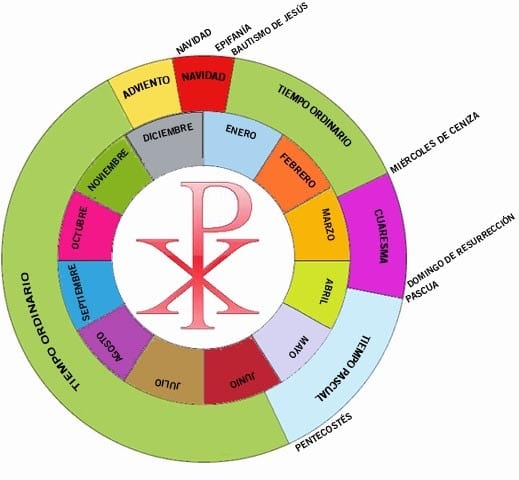
Christian calendar
The Christian or Catholic calendar, also known as the liturgical calendar, is an index of the year arranged by Catholics to regulate the periods of spiritual life. It contains a list of feasts, fasts and saints’ days, obviously beginning with the commemoration of the Resurrection of Jesus Christ on Easter Day.
These liturgical periods or seasons are
Advent, which begins four Sundays before Christmas Day and lasts four weeks. It ends on the eve of the Nativity on 25 December.
Christmas, which begins with the first vespers of the Nativity of the Lord (25 December) and ends with the second vespers of the Baptism of the Lord. This date was celebrated in Rome before 354 AD.
Lent is a period of preparation for Easter. It begins on Ash Wednesday and ends with the Lord’s Supper on Maundy Thursday. In some places Lent was observed as a period of fasting, not necessarily daily, but certainly on Sundays and Saturdays in the East.
The Christian calendar also includes the Easter Triduum, Easter Season and the second part of Ordinary Time.


